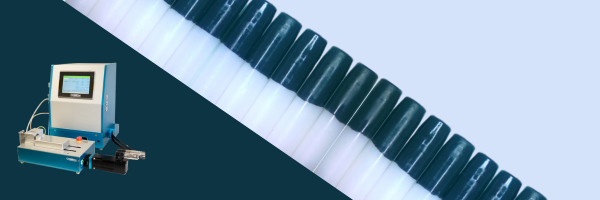Catheter tipping, a crucial stage in medical device manufacturing, demands meticulous attention to quality control. Ensuring the precision and consistency of catheter tips is paramount for the devices' efficacy and patient safety. This article focuses on the significance of quality control in catheter tipping, key measures to maintain high standards, compliance with regulations, challenges faced in the industry, and a glimpse into the future of quality control processes.
The Importance of Quality Control in Catheter Tipping
Quality control is the backbone of any manufacturing process, and catheter tipping is no exception. The catheter tip's shape, size, and material characteristics directly impact its performance in medical applications. Besides the material's effect on the tipping (Catheter Tip-Forming) process, other factors can cause defects, such as flashes, short shots, voids, and incomplete tips. Rigorous quality control measures guarantee that each catheter leaving the production line meets the specified standards, providing healthcare professionals and patients with reliable and consistent products.
Key Quality Control Measures
1. Process Validation
Thorough validation of the catheter tipping process is vital to guarantee its consistency and dependability. This entails verifying that the process consistently yields catheters with the desired tip shape and material properties. Several crucial factors govern the flawless tipping process, including precise dimensional tolerances of the tip-forming die, optimal induction coil properties and positioning above the tipping die, maintaining consistent catheter material melting and forming temperatures, and employing a method of gripping and transferring the catheter tube into the mold that ensures a constant insertion stroke without any material slippage or elasticity affecting the overall forming stroke.
2. In-Process Monitoring
Real-time monitoring during the tipping process allows for immediate identification of deviations. ONEX RF catheter tippers provide closed-loop monitoring of temperature and applied RF power during the tip-forming process, additionally, the induction-coil position and forming stroke are monitored by sensor feedback to prevent any human error during setup. Advanced sensors and monitoring systems enable manufacturers to intervene promptly if any variations occur, ensuring that catheters meet quality standards.
3. Dimensional Inspection
Accurate measurements of the catheter tip's dimensions are of utmost importance. Employing automated inspection systems allows for the evaluation of length, diameter, and taper angles, ensuring full compliance with design specifications. The ultimate shape of the catheter tip is determined by the internal dimensions of the tipping die. Conducting a First Article Inspection (FAI) is essential, along with a meticulous assessment of the tipping die or mold's internal dimensions using a silicon impression, taking into account the material's shrinkage factor.
4. Material Testing
Quality control extends to the material itself. Manufacturers conduct comprehensive material testing to verify the integrity, strength, and biocompatibility of the catheter material, ensuring it meets regulatory requirements.
5. Visual Inspection:
Visual inspections play a crucial role in detecting any surface defects, irregularities, or deviations from the standard. The combined efforts of human inspectors and automated vision systems ensure a meticulous level of scrutiny. It is important to consider proper lighting integration when implementing automated vision inspection systems to prevent external lighting fluctuations from impacting the accuracy of the results.
Compliance with Standards and Regulations
Adhering to regulatory standards is of utmost importance in the catheter tipping industry. By meeting the rigorous requirements set by organizations such as the FDA, manufacturers not only ensure the safety of catheters but also their suitability for use in medical settings. Furthermore, the equipment utilized for catheter tip formation undergoes annual calibration and verification to guarantee the integrity of the electronic instruments involved in the forming process. This can be conveniently achieved by utilizing the ONEX RF Calibration Module, which simplifies the connection to the tip-forming machine, allowing access to critical process monitoring components. Compliance extends beyond meeting initial standards; it necessitates staying up-to-date with regulatory updates to remain at the forefront of industry advancements and uphold the highest level of quality control.
Top Challenges in Quality Control
Quality control in catheter tipping encounters several challenges, including:
1. Variability in Materials
Different catheter materials may exhibit varying properties, requiring adaptable quality control measures to account for these differences.
2. High Production Volumes
Managing quality control in high-volume production settings demands efficient and automated inspection processes to maintain consistency without compromising speed.
3. Selection of the Right Equipment
Selecting the right equipment for catheter tipping is a critical aspect of ensuring high-quality production. The choice of equipment can significantly impact the efficiency, accuracy, and consistency of the tipping process. Manufacturers must carefully consider various factors when selecting equipment to meet their specific needs. ONEX RF provides an extensive range of cutting-edge catheter tipping machines that excel in tipping, bonding, and flaring processes.
4. Human Error
Even with advanced technology, the potential for human error exists. Thorough training and stringent protocols help mitigate this risk.
5. Evolving Regulatory Landscape
Adapting to changes in regulatory requirements poses a challenge, but it is crucial for maintaining compliance and product quality.
The Future of Quality Control in Catheter Tipping
The future of quality control in catheter tipping is poised for advancements driven by technology. Machine learning and artificial intelligence (AI) will play a pivotal role in enhancing inspection accuracy and efficiency. Automated systems with adaptive learning capabilities will enable real-time adjustments, ensuring continuous improvement in the quality control process.
In the ever-evolving landscape of medical device manufacturing, quality control remains a cornerstone in the catheter tipping industry. The commitment to precision, adherence to standards, and the integration of advanced technologies will continue to shape the future of quality control processes. As the industry navigates challenges and embraces innovation, the end goal remains steadfast: delivering safe, reliable, and high-quality catheters for the betterment of patient care and medical practices.




-2.gif)

.png)

-1.png)
.png)

.png)